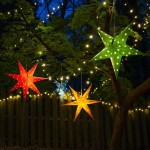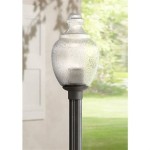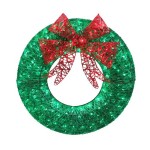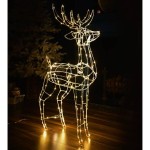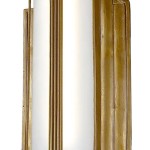Illuminating the Outdoors: A Comprehensive Guide to Outdoor Neon Light Strips
Outdoor neon light strips have emerged as a versatile and aesthetically pleasing solution for enhancing outdoor spaces. These flexible, durable, and energy-efficient lighting options provide a modern alternative to traditional outdoor lighting fixtures. Their ability to conform to various shapes and surfaces allows for creative expression and functional illumination in diverse outdoor settings. This article delves into the characteristics, applications, benefits, and considerations surrounding the use of outdoor neon light strips.
The term "neon" in the context of these light strips is often a misnomer. Traditional neon lights utilize noble gases to produce light, however, modern "neon" light strips typically leverage LED technology. This LED-based technology mimics the appearance of traditional blown glass neon while offering superior durability, energy efficiency, and ease of installation. These strips are designed for outdoor use, incorporating robust weatherproofing and protective coatings to withstand environmental elements such as rain, snow, UV radiation, and temperature fluctuations.
The core of an outdoor neon light strip comprises a series of closely spaced LEDs encased within a flexible, often silicone or PVC, housing. This housing diffuses the light emitted by the LEDs, creating a smooth, continuous glow reminiscent of traditional neon. Varying levels of opacity and diffusion within the housing influence the brightness and the uniformity of the light output. The strips are available in a wide range of colors, including single-color options and RGB (Red, Green, Blue) variants that allow for dynamic color changes and programmable lighting effects.
The flexibility of neon light strips is a key advantage. They can be easily bent, shaped, and cut to fit specific contours and architectural features. This adaptability makes them suitable for outlining buildings, illuminating pathways, accentuating landscaping, and creating custom decorative lighting displays. The installation process is usually straightforward, involving the use of mounting clips, adhesive backing, or other securing methods. The strips are typically powered by low-voltage transformers, ensuring safe outdoor operation.
Key Point 1: Advantages of Outdoor Neon Light Strips Over Traditional Lighting
Outdoor neon light strips offer several key advantages over traditional outdoor lighting options, such as incandescent bulbs, fluorescent tubes, or even older LED fixtures. These advantages contribute to their increasing popularity and adoption in various applications.
Firstly, energy efficiency is a substantial benefit. LED technology consumes significantly less power than incandescent or fluorescent lighting, resulting in lower energy bills and a reduced carbon footprint. This energy savings can be particularly significant for outdoor lighting, which often operates for extended periods, especially during the evening and nighttime hours.
Secondly, longevity is a crucial factor. LED-based neon light strips typically have a lifespan that far exceeds that of traditional lighting sources. The durable construction and robust components contribute to this extended lifespan, minimizing the need for frequent replacements and reducing maintenance costs. Many high-quality outdoor neon light strips boast lifespans of 30,000 to 50,000 hours or more.
Thirdly, durability is an important consideration for outdoor applications. Outdoor neon light strips are specifically designed to withstand harsh weather conditions, including rain, snow, extreme temperatures, and UV exposure. The protective housing and weather-resistant materials ensure that the strips maintain their performance and appearance over time, even in challenging environments. This resilience makes them suitable for year-round outdoor use.
Fourthly, flexibility and design versatility are significant advantages. The ability to bend, shape, and cut neon light strips allows for creative and customized lighting designs that are not easily achievable with traditional lighting fixtures. This flexibility enables the creation of unique architectural accents, decorative lighting displays, and functional illumination solutions tailored to specific needs and preferences.
Finally, safety is enhanced. Outdoor neon light strips generally operate on low-voltage power, reducing the risk of electrical shock compared to higher-voltage lighting systems. This safety feature is particularly important in outdoor environments where exposure to moisture and other elements can increase the risk of electrical hazards.
Key Point 2: Diverse Applications of Outdoor Neon Light Strips
The versatility of outdoor neon light strips makes them suitable for a wide array of applications, ranging from architectural enhancements to decorative accents and functional lighting solutions. Understanding these applications can help in selecting the appropriate type of strip and integrating it effectively into the desired outdoor space.
Architectural Lighting: Neon light strips can be used to outline the contours of buildings, highlighting architectural features and creating visually appealing facades. They can accentuate rooflines, corners, windows, and other architectural details, adding a modern and sophisticated touch to building exteriors. This application is particularly effective for commercial buildings, hotels, and restaurants seeking to enhance their curb appeal and attract attention.
Landscape Lighting: Outdoor neon light strips can illuminate pathways, gardens, and other landscape features, creating a safe and inviting outdoor environment. They can be used to highlight trees, shrubs, and flowerbeds, adding depth and dimension to the landscape at night. The flexible nature of the strips allows them to be easily integrated into various landscape designs, providing both functional illumination and aesthetic enhancement.
Accent Lighting: Neon light strips are ideal for creating accent lighting effects, adding a touch of style and personality to outdoor spaces. They can be used to illuminate patios, decks, and balconies, creating a warm and inviting atmosphere for relaxation and entertainment. The color-changing capabilities of RGB neon light strips allow for dynamic lighting effects that can be customized to suit different moods and occasions.
Signage and Advertising: Outdoor neon light strips are commonly used for signage and advertising purposes, attracting attention to businesses and promoting products or services. They can be used to create eye-catching displays, highlighting business names, logos, and promotional messages. The bright and vibrant colors of neon light strips ensure high visibility, even in low-light conditions.
Holiday and Event Lighting: Neon light strips are a popular choice for holiday and event lighting, adding a festive touch to outdoor spaces. They can be used to create seasonal displays, decorating homes and businesses for holidays such as Christmas, Halloween, and Thanksgiving. The flexibility and ease of installation of neon light strips make them ideal for temporary and seasonal lighting applications.
Key Point 3: Factors to Consider When Selecting and Installing Outdoor Neon Light Strips
Choosing the right outdoor neon light strip and ensuring proper installation are crucial for achieving optimal performance, longevity, and safety. Several factors should be considered during the selection and installation process to maximize the benefits of these lighting solutions.
IP Rating: The Ingress Protection (IP) rating indicates the level of protection against dust and water. For outdoor applications, it is essential to choose neon light strips with a high IP rating, such as IP65 or higher, to ensure that they are protected from rain, snow, and other environmental elements. A higher IP rating signifies greater protection and suitability for demanding outdoor conditions.
Voltage and Power Consumption: Neon light strips typically operate on low voltage, such as 12V or 24V. It is important to select a transformer or power supply that is compatible with the voltage requirements of the light strips. The power consumption of the strips should also be considered to ensure that the power supply is adequately sized to handle the load. Overloading the power supply can lead to overheating and premature failure.
Brightness and Color: The brightness of neon light strips is measured in lumens per meter. The appropriate brightness level will depend on the specific application. For accent lighting, lower brightness levels may be sufficient, while for pathway lighting or signage, higher brightness levels may be required. The choice of color should also be carefully considered, taking into account the desired aesthetic effect and the surrounding environment.
Material and Construction: The material and construction of the neon light strip housing are important factors to consider. Silicone housings are generally more flexible and durable than PVC housings, but they may also be more expensive. The LEDs used in the strips should be of high quality to ensure consistent brightness and color over time. The adhesive backing, if used, should be strong and weather-resistant to prevent the strips from peeling off over time.
Installation Method: The installation method will depend on the specific application and the type of surface to which the strips will be attached. Mounting clips provide a secure and reliable attachment method, while adhesive backing offers a quick and easy installation option. It is important to ensure that the surface is clean and dry before applying adhesive backing. When cutting the strips, it is essential to cut them at the designated cutting points to avoid damaging the LEDs or the circuitry.
Compliance and Safety: Outdoor neon light strips should comply with relevant safety standards and regulations. Look for certifications such as UL (Underwriters Laboratories) or CE (Conformité Européenne) to ensure that the strips have been tested and meet safety requirements. It is also important to follow all safety precautions during installation, such as disconnecting the power supply before working on the wiring.
By carefully considering these factors, it is possible to select and install outdoor neon light strips that provide long-lasting, energy-efficient, and aesthetically pleasing illumination for a wide range of outdoor applications. Proper planning and attention to detail will ensure that the lighting system operates safely and effectively, enhancing the beauty and functionality of the outdoor space.

Led Neon Flexible Strip Lighting Outdoor Bondilights
Led Neon Rope Light 12v Strip Lights Waterproof Silicone For Indoor Outdoor Decoration Com

Philips Hue Outdoor Lightstrip Smart Light Strips Offer App Controlled Led Neon Lighting

Outdoor 200ft Led Neon Multiple Colors 12v Flexible Smd 5050 Rgb Rgbw Uni Davis Lighting

φ14mm 360 Degree Round Led Neon Flex Outdoor Ip68

Flexible Led Neon Strip Light How To Use Tyria Lighting Luces Exterior De Navidad Tiras
Led Neon Rope Light 12v Strip Lights Waterproof Silicone For Indoor Outdoor Decoration Com

φ14mm 360 Degree Round Led Neon Flex Outdoor Ip68

Led Neon Flex Flexible Strip Light Lights
Led Neon Rope Light 12v Strip Lights Waterproof Silicone For Indoor Outdoor Decoration Com
